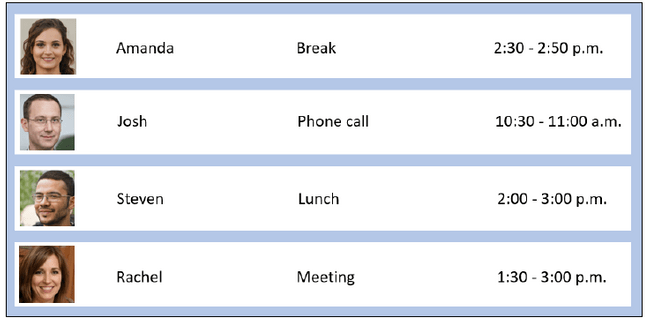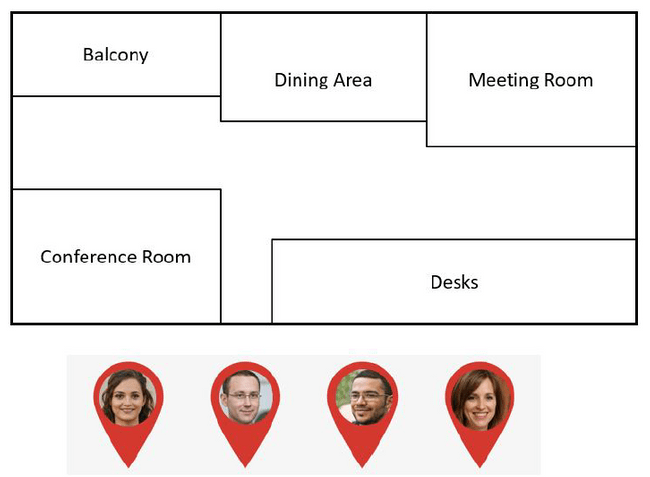Get instant access to authentic SHL Deductive reasoning tests, which now include the latest interactive format. Enhance your deductive abilities and excel on your test.
For additional SHL Inductive test questions and more from other fields, visit our free SHL practice test page or checkout the JobTestPrep All Inclusive SHL Assessment Prep.
Deductive Reasoning Tests Explained
These tests measure how well you can draw a logical conclusion from broad principles that are accepted as true.
Here's a basic illustration of how deduction works:
- Every dog falls under the category of mammals.
- Every mammal has warm blood.
By applying deductive reasoning, it's logical to infer that every dog has warm blood.
Deductive Reasoning VS Inductive Reasoning
Deductive reasoning starts with broad premises to arrive at particular outcomes, whereas inductive reasoning begins with detailed observations leading to broader generalizations.
Currently:
Many companies appreciate workers who possess sharp deductive and reasoning capabilities. For this reason, they often employ evaluation exams, like those provided by SHL, to confirm that the individuals they recruit have these skills.
Understanding the SHL Deductive Reasoning Test
The SHL Deductive Reasoning test is a screening tool used by employers to evaluate a candidate's ability to reason logically. It includes tasks like evaluating arguments for their validity, examining situations, and making logical deductions from given information. SHL offers three different forms of this test: one is an interactive version, while the other two are traditional multiple-choice formats that are not interactive.
What to Expect on the SHL Deductive Test?
The specific SHL Deductive Reasoning Test you encounter will vary based on the employer's preferences. Each variant of the test has its own set of questions, allotted time, and level of challenge.
We've outlined the details for each version of the test and included examples of the types of questions you might face to help you become familiar with what to expect.
Before You Continue...
Below are a few sample inductive questions.
Practice can really make a difference. Try our All-Inclusive SHL Prep Course.
We know SHL only provide a few days to prepare. That's why we designed a flash course complete with 100+ practice tests, video, PDF, and interactive guides, full solutions and explanations for each sample question, and detailed score reports.
SHL Verify G+ Deductive Reasoning Test (Interactive)
You will face 12 questions in this exam, and you are given a total of 18 minutes to complete them.
Specific directions will guide you through an activity-based test that requires you to engage directly by dragging and dropping elements on your screen.
The SHL Interactive Deductive Reasoning test represents a significant shift from the traditional multiple-choice format you might be used to.
In this assessment, you'll encounter tasks like arranging a dynamic calendar, inferring the order of individuals based on various factors, organizing meeting spaces, and similar challenges.
This is part of the reason why this test is seen as more challenging, with each question demanding more time to solve.
(Keep in mind, you are allotted roughly 1.5 minutes for each question.)
To gain a clearer sense of this interactive test's distinct nature, consider this example of a typical question you might encounter:
SHL Interactive Deductive Reasoning Sample Question
Office Schedule

Outside of scheduled breaks, employees stay at their desks. Calls are made in meeting rooms. The cafeteria is reserved for eating, and the balcony is for breaks.
At 2:30 p.m., ensure every employee is in the right room.
*Remember, in the actual test, you will need to move the location pin for each worker to the appropriate spot.

How to answer this question type
In this task, you're provided with details about four employees in your workplace. Their schedules and the locations of their activities are outlined. Different tasks are carried out in distinct areas within the office.
Your job is to pinpoint each employee's location at a given time. A picture representing each employee is attached to a pin, which you must place accurately on the office layout.
For example, you're asked to determine where everyone is at 2:30 p.m. This requires knowing the whereabouts of each person at that specific time.
You'll notice that Amanda is on a break at 2:30 p.m. The information indicates that breaks are usually taken on the balcony, so you can deduce that Amanda is there.
Josh's schedule shows he's on a call from 10:30 to 11:00 a.m., but there's no mention of his activities at 2:30 p.m. This suggests he doesn't have a scheduled task at that time. The guidelines state that when employees are not engaged in specific activities, they should be at their desks. Therefore, you can conclude that Josh is at his desk at 2:30 p.m.
Steven is having his lunch from 2:00 to 3:00 p.m. Since lunch is had in the dining area, you can place Steven there at 2:30 p.m.
Lastly, Rachel is in a meeting from 1:30 to 3:00 p.m. This means she is in the meeting room at 2:30 p.m.
SHL Verify G+ Deductive Reasoning Test (Non-Interactive)
There are 18 questions in total.
You have a time limit of 20 minutes to complete the test.
Specific instructions include: "For each question, you will be given multiple choice options, ranging from four to five possible answers." Additionally, the instruction "Click on the answer..." suggests that this is not a hands-on test.
The SHL Deductive Reasoning test is a multiple-choice assessment that is not interactive. It provides five possible answers for each question, but only one is correct.
The test will present you with three different kinds of questions:
1. You will read a paragraph or a set of statements and then determine which statement must or cannot be true.
2. You will be given a detailed paragraph and asked to identify the assumption that the argument is based on.
3. You will analyze tables filled with data and numbers and answer a complex question related to them.
Here is an example of the third type of question:
SHL Non-interactive Deductive Reasoning Test Example

Please note that codes are typically organized in a sequence starting with the Calls package, followed by the Text messages package, then the Multimedia messages package, and finally the Data package.
Can you identify which of the following sequences of codes is not listed correctly?
The right choice is option (D).
This is because the 'S' represents a 'Text message package' that is included in the 'Silver membership plan', and '8-50' signifies a 'Multimedia message package' that is part of the 'Platinum membership plan'.
SHL Deductive Reasoning Test
The SHL Verify Deductive test features 18 questions that must be completed within a 20-minute time frame. You can identify this test by the SHL logo positioned in the upper left corner of the initial screen. Starting in 2024, only a few companies will continue to use this particular version, as the majority have transitioned to SHL's newer interactive and non-interactive assessments.
In terms of evaluating deductive reasoning abilities, this version bears a strong resemblance to the non-interactive variant. However, its presentation and visual design appear more dated.
Consider this example of a typical question format you might encounter on the test:
SHL Deductive Reasoning Sample Question
- There are no dancers that aren't slim.
- There are no singers that aren't dancers.
Which statement must be true?
The right choice is option (B) - Every singer is slim.
The complexity in this question arises from its negative phrasing. This requires us to first clarify the characteristics of each group and then determine how they are connected.
The statement "There are no dancers that aren’t slim" translates to every dancer being slim (dancer → slim).
In the same vein, "no singers that aren’t dancers" implies that every singer is also a dancer (singer → dancer).
Mapping out these relationships helps to see the connections more clearly. When we combine the two statements, we get:
Singer → dancer → slim
Which leads to the conclusion:
Singer → slim.
Thus, the only accurate conclusion is that every singer is slim. All other possible conclusions are either incorrect or cannot be confirmed.
How to Pass the SHL Deductive Reasoning Test?
To successfully navigate the SHL Deductive Reasoning test, preparation is key.
Even those with strong deductive reasoning abilities may find it challenging to adjust to the format of the questions. This is particularly true for those who are accustomed to traditional multiple-choice tests and are now faced with the interactive version of the SHL test.
Jumping into the test without preparing means you'll miss out on the chance to familiarize yourself with its unique style. You'll only have a handful of practice questions to warm up before you're expected to tackle the main test questions.
To increase your chances of passing the SHL Deductive Reasoning test, it's advisable to engage in a comprehensive practice routine in advance, one that's specifically designed for the version of the test you'll be taking.
Currently, you have a couple of preparation options:
1. SHL Direct offers a practice test.
2. JobTestPrep provides a detailed SHL preparation package.
Create Your Own Assessment Prep Kit!
Finding a job can be a lengthy and challenging journey, often stretching over months and requiring multiple pre-employment tests and interviews. With our Premium Membership, you'll have the support you need every step of the way.
Mix & match 3 Preparation Packs at 50% discount for 1,3, or 6 months
Why Practicing Just Using SHL Direct Might Not Be Enough?
The email inviting you to take the SHL assessment typically provides a link to SHL Direct, which is SHL's official platform for practice questions and complimentary practice exams.
However, there are several issues to consider:
Firstly, the email doesn't specify which version of the SHL test you should prepare for—the interactive or the non-interactive one—both of which are significantly different.
Secondly, after completing a practice test, particularly the non-interactive version, the score report doesn't indicate which questions you answered correctly or incorrectly. This makes it difficult to identify the areas you need to improve on. Moreover, the report doesn't offer solutions, feedback, or explanations, so it's hard to learn from any mistakes you make.
Lastly, the practice tests on SHL Direct cover only a limited range of question types you might encounter on the actual test. Some practice questions may also be less challenging than those on the real test. SHL acknowledges this on their website, noting that the difficulty level of their practice materials may not match that of the actual assessments.
This brings us to consider other preparation options...
JobTestPrep’s SHL Deductive Reasoning Practice Tests
JobTestPrep offers the most comprehensive and accurate-to-the-test SHL prep currently on the market. It includes:
✔ An extensive collection of practice exams that covers all test formats, including interactive and non-interactive versions, helping you become accustomed to the test's demands.
✔ Detailed walkthroughs for each practice item, teaching you the methodology to tackle any SHL deductive reasoning question, rather than just supplying the correct answers.
✔ Practice questions set at a realistic level of difficulty and timed conditions to equip you for one of the test's most challenging elements – the strict time constraints.
Instant Access & Money-back Guarantee
SHL Deductive Reasoning Scores Explained
Once you've completed the SHL Deductive Reasoning Test, you will be provided with a score report, which is referred to as the "Candidate Assessment Report."
The numbers presented in this report, along with the overall scoring system used by SHL, are relative. This indicates that your scores are evaluated in relation to a substantial number of other individuals who have taken the same assessment before you.
The outcome of your test is categorized into five levels, from A to E, which you can observe in the example provided below:

The better your score, the more likely you are to be placed in group "A". Generally, those who find themselves in groups "A" or "B" stand a good chance of passing the exam.
Therefore, despite the scoring system being relative to how others perform, aiming for the highest score you can achieve remains important.




